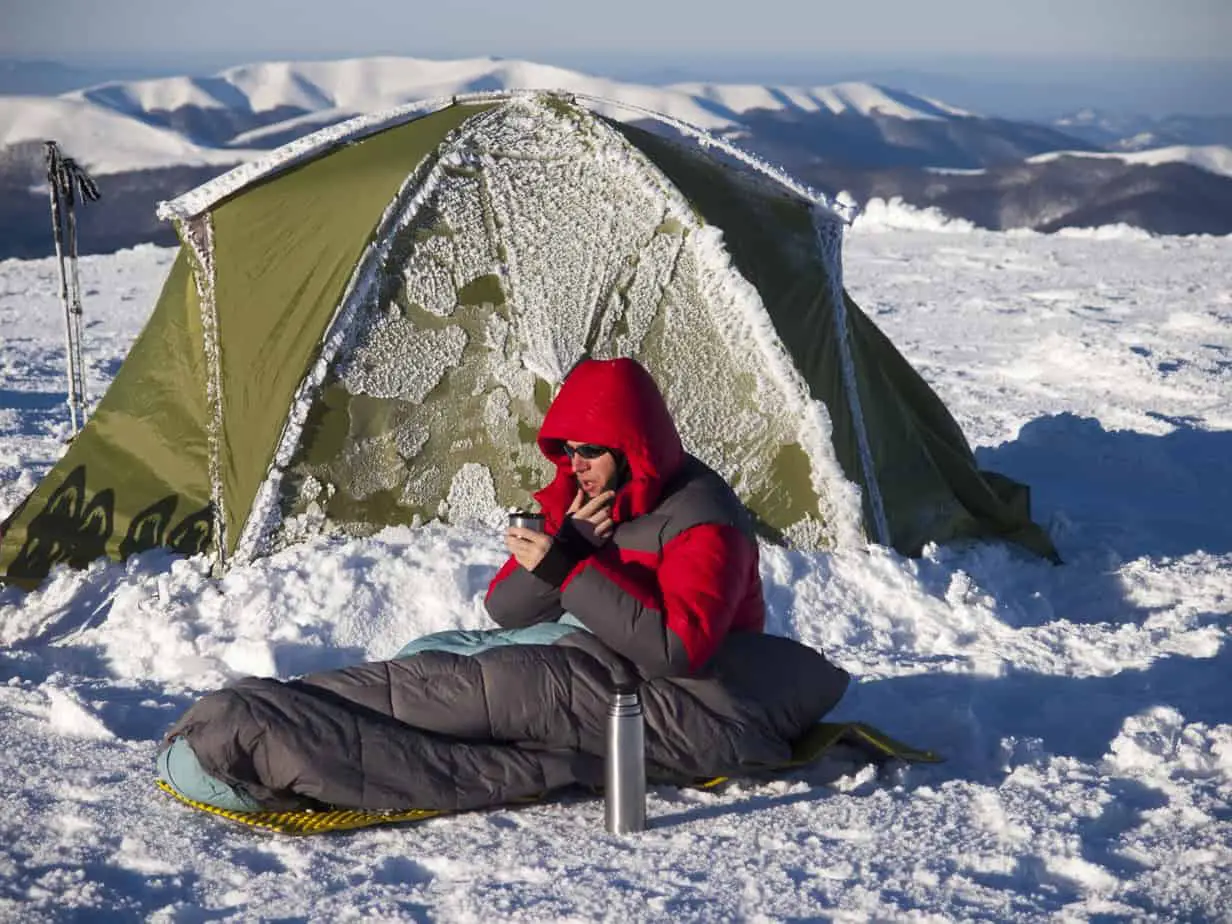
Were you too hot or too cold in your sleeping bag on your last trip? Follow these great tips to get the most out of modern sleeping bags.
Too Cold?
Use a sleeping pad between your bag and the ground. The weight of your body in your sleeping bag compresses the fill (insulation) beneath you, increasing the conductive heat loss to the ground. A sleeping pad will effectively insulate you from this heat loss, and also be more comfortable than the hard ground! Use foam pads or self inflating pads.
Sleep in dry clothes. Synthetic or wool fibers are best. Avoid cotton because it keeps moisture against your skin, making you colder. I usually carry a pair of ligthweight synthetic thermals in colder months, and change into them just before sack time.
Sleep in a shelter. Either a tent or bivy shelter will keep you out of the wind. Smaller tents will add several degrees of warmth on cold nights in comparison to taller, larger tents.
In a mummy type bag, pull the hood snugly around your head.
Wear a beanie or stocking cap, and a pair of clean, dry thermal socks at night.
Need to add 10 degrees to your bag’s thermal rating? Pick up an inexpensive fleece or silk liner for cold trips. These inexpensive liners will greatly extend the use of your sleeping bag purchase, often eliminating the need for separate warm weather and cold weather sleeping bag purchases.
Loft the sleeping bag before use. After pulling the bag from its compression sack, scrunch the bag together and fluff it up. Let it rest for a few moments so the filling expands, increasing its insulating power.
Store the bag properly between uses. See our related article on proper sleeping bag storage.
Too Warm?
Heat Loss
Remembering the basics of heat loss will help you troubleshoot heat problems. Next time you find yourself up at night, either too cold or too hot, pay close attenting to where you are feeling cold, and troubleshoot based on these principles:
Try unzipping the bag from the bottom to ventilate your feet. Some bags have a ventilated footbox – a separate zipper near the feet – designed for this purpose.
In particularly hot weather, try using only the fleece liner (mentioned in the cold weather tips above.) Many fleece liners are good in weather down to 50 degrees.
Try sleeping with the bag open. If it gets cool during the night, the bag can be easily zipped up or pulled over you.
Convection happens when heat leaves the body by traveling through the air. In a sleeping bag, this occurs in places where the bag is open, or in places where there are large gaps between the body and the bag.
Radiation is the process of a body’s radiant heat leaving through the air – passing through the material of the bag.
Conduction is the transfer of heat through direct contact, particularly through the ground.

